Extra extra, read all about it! Analyzing the language of newspapers over time

Over the past 50 years, the landscape of journalism has changed dramatically. Typewriters have been traded for keyboards, and print circulation has gradually succumbed to the new digital age.
But linguistically, has reporting style changed too? To answer this question, we used Relative Insight’s text analysis platform to analyse British newspaper articles over the past 50 years.
We collated a sample of articles from the UK’s most trusted newspapers, spanning from 1970 to 2021. To standardise the comparison, all articles appeared in the ‘Culture’ section of each site. Topics included music, art, fashion, literature, films and theatre. We then uploaded this data to Relative Insight, splitting the data into three categories:
- 1970s and 1980s
- 1990s and 2000s
- 2010s onwards
Language comparison worked its magic, leaving us with the linguistic nuances unique to each period.
1970s and 1980s
Emphatically marvellous!
When reporting on Culture, journalists from the 70s and 80s frequently used maximisers to emphasise a point – totally, emphatically, magically. Quintessentially British adjectives such as marvellous and melodic, along with the noun sensation, also appeared 14.9x more than in other periods. Today, however, it seems that the word marvellous is used in conversation only twice per million words, according to the researchers behind 2014’s Spoken British National Corpus.
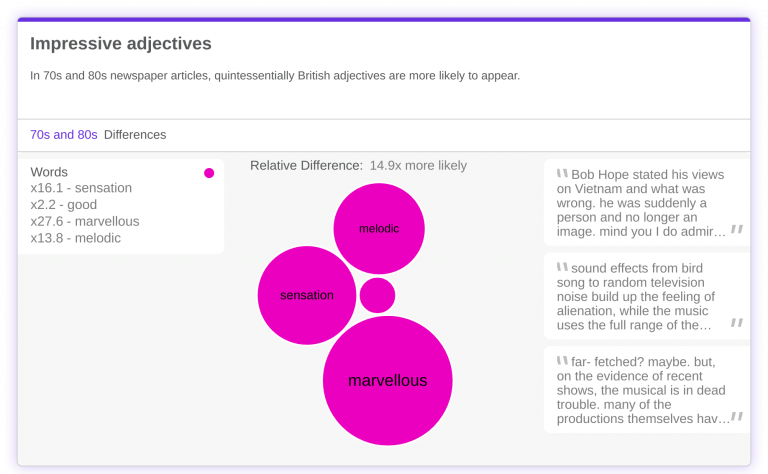

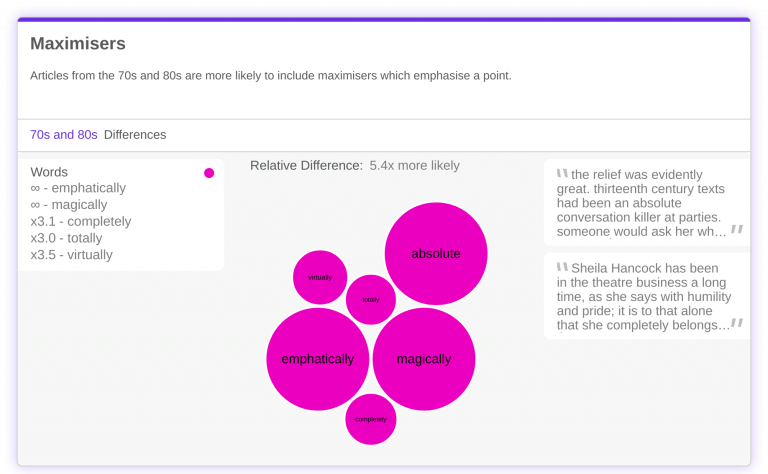

MR, Miss, Mrs
The British are known for being polite and well-mannered, which is evident in the reporting style of the 70s and 80s. Journalists in this period opted for formality when referring to their subjects, using honorifics such as Mr, Miss, Mrs and Prof. However, come the 90s, this formality is dropped and replaced with AP style – full names first, surnames thereafter.
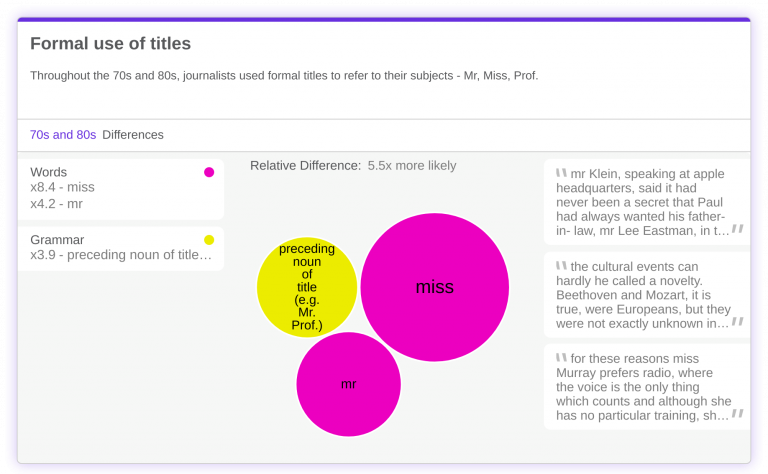

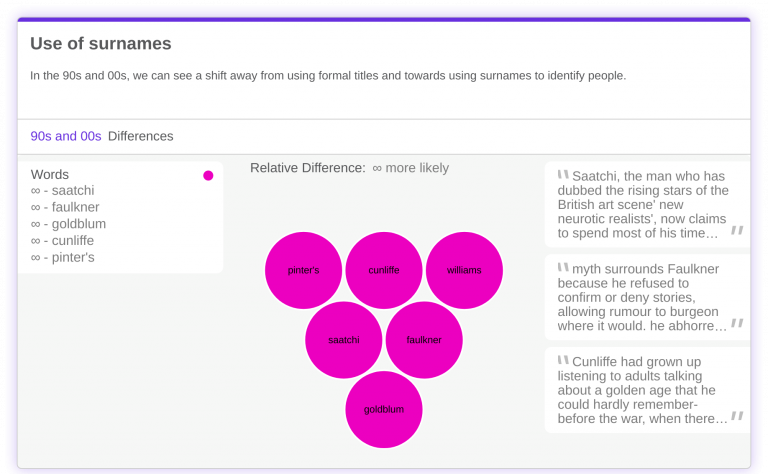

1990s and 2000s
Hollywood influence
If the 1990s was the era of Kate & Leo, Friends and The Spice Girls, the Noughties was the era of footballers’ wives, Hip Hop and mega film franchises such as Harry Potter and Lord of the Rings. Or should I say movies? During this period, the word movies was used 2.9x more, highlighting how Americanisms were beginning to influence British English. 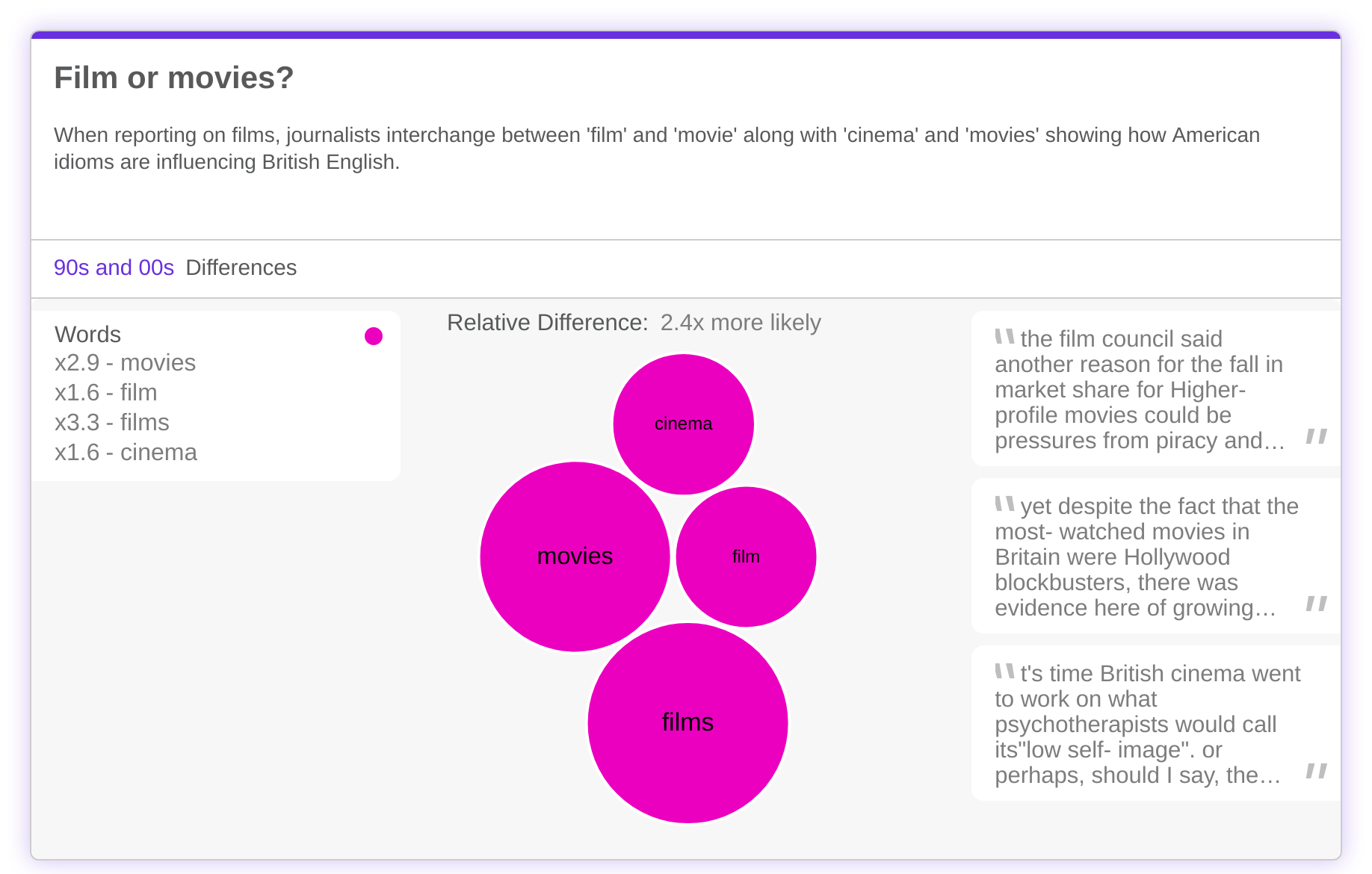

Increased business coverage
The World Wide Web became available for public use in the 90s, and newspapers adapted accordingly. The internet became a fountain of knowledge providing reporters with various perspectives and context for stories. As a result, the arts were frequently discussed in business terms, with words such as operation, ranked, and productions appearing 5.7x more than before.
Articles documented the rapid expansion of film, art and music into the multi-billion-pound international industry we know today. Linguistically, the trend flows into the following decade. Words such as global, viral and universal are used to describe this new landscape of the arts from 2010 onwards.
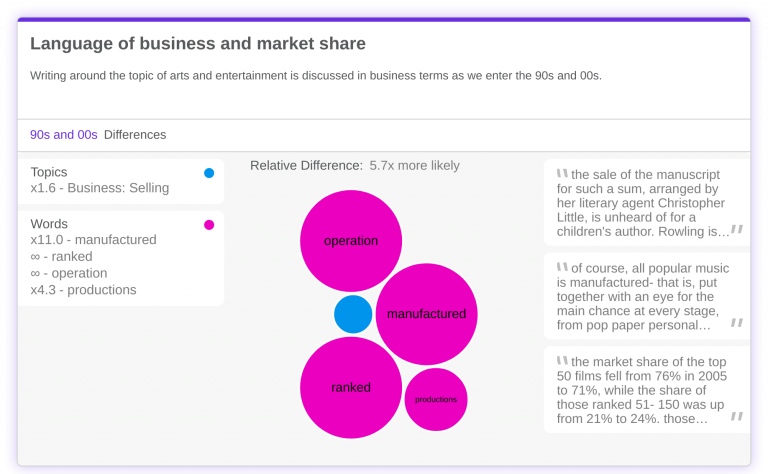

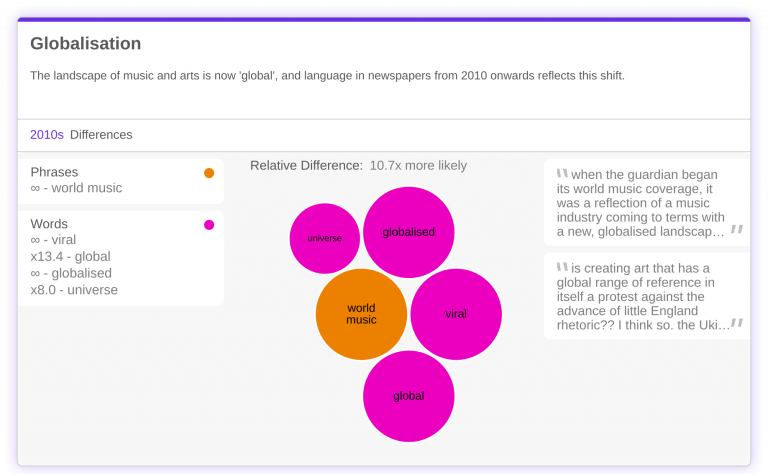

2010 onwards
The digital age
Unsurprisingly, the language of reporting from 2010 up until today has been heavily influenced by advances in technology. The sheer influence of social media is evident through journalists’ use of hashtags, which have come to define cultural movements. Take for instance #MeToo. Social media became the battleground for thousands of women, which in turn became newsworthy. In 2018, Forbes reported that social media had become the main source of news online, replacing traditional media.
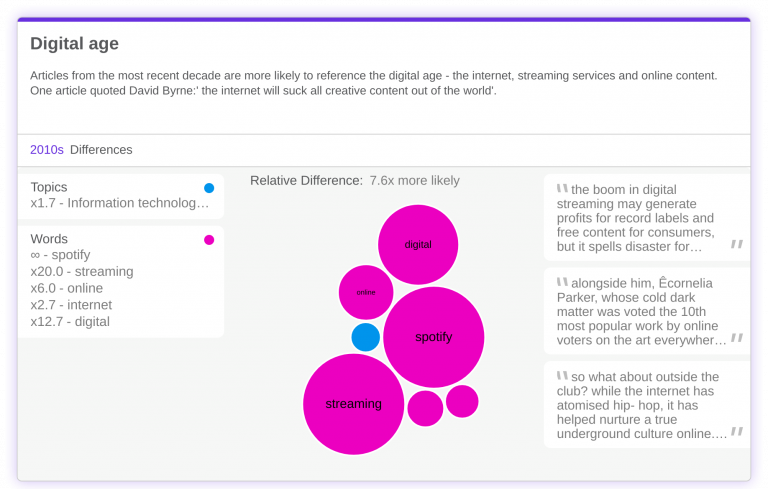

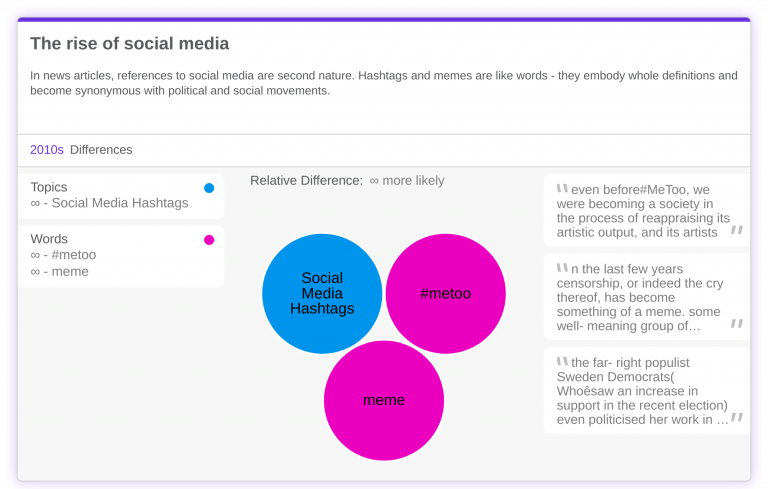

Let’s talk politics
On a similar note, the language of reporting has become increasingly more political in recent years. Despite only analysing articles about art and entertainment, political language still filters through. Moreover, reporters and news sources are much more likely to hold an opinion, replacing the objective reporting of times gone by. The use of rhetorical questions ultimately leaves the reader questioning themselves.
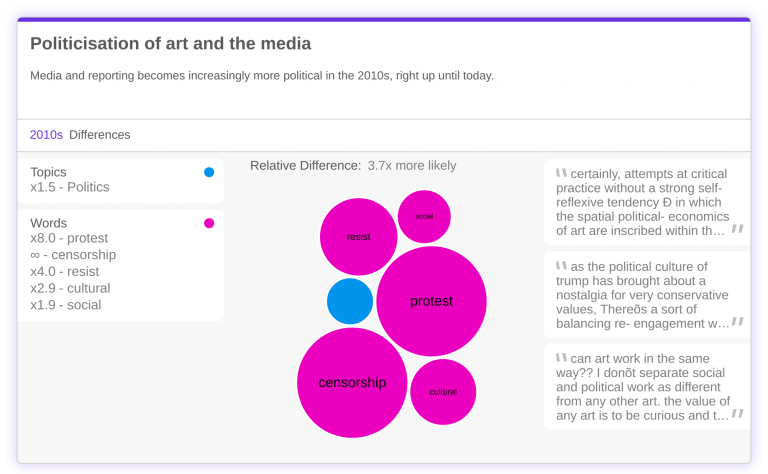

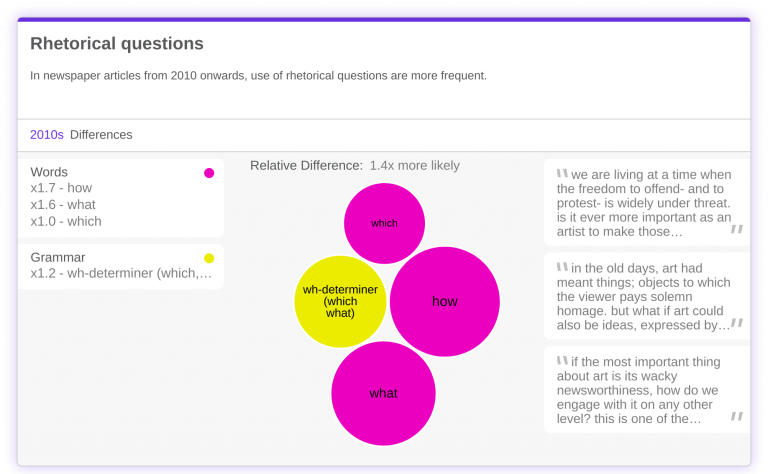

Originally, I ran this analysis with a hypothesis in mind: a time-based comparison to show how Americanisms have crept into British English. However, the beauty of language comparison is that you never know what you’ll discover. Newspapers immortalise how an audience talks or once talked, pinpointing the words or phrases unique to each moment in time. Commercially, this type of analysis can help brands keep up with the times by understanding how audiences’ opinions and language are constantly changing.
